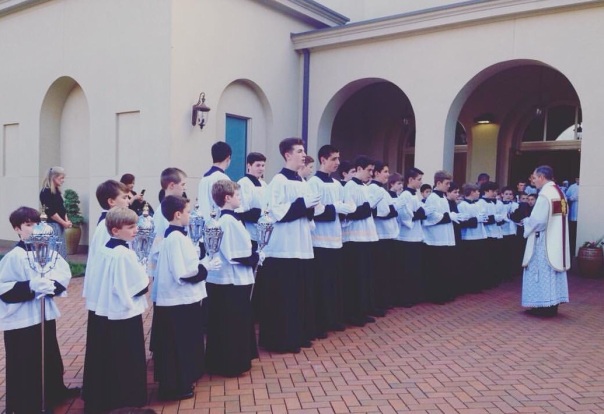Blog Archives
Altar Serving and the Ordination Class of 2017

Every year Georgetown’s Center for Applied Research in the Apostolate (CARA) conducts a survey of ordinands for the United States Conference of Catholic Bishops. This year 590 ordinands to the priesthood were sent the survey; of these, 444 (or 75 percent) responded.
While this annual survey once again provides us a fascinating glimpse into the make up of this year’s class -such as parents religious affiliation, number of siblings, educational background, and ethnic make-up- it is interesting to see those common factors which contributed to these men’s discernment.
As I have chronicled in past years, altar serving is a common experience shared by the majority of our ordained. The class of 2017 is no exception.
CARA’s surveys shows that 77 percent of diocesan ordinands listed Altar Serving as a parish ministry in which they had participated. Compare that to Lector (51 percent), Extraordinary Minister of Holy Communion (42 percent), and Youth Minister (34 percent), and we quickly realize just how integral altar serving is to the discernment process for young men. Recall what Rome said in 1994 (emphasis mine):
The Holy See wishes to recall that it will always be very appropriate to follow the noble tradition of having boys serve at the altar. As is well known, this has led to a reassuring development of priestly vocations. Thus the obligation to support such groups of altar boys will always continue.
As I have written about previously (here, here, and here), the realization of the very real and very consistent correlation between altar boys and the priesthood has caused an increasing number of parishes to return to male only servers at Mass. The traditional practice has usually resulted in an increase in male participation, rather than the decrease in servers often anticipated by some.
To be clear, no one is suggesting that this is the only factor in a young man’s discernment process. It may not even be the primary factor. The CARA survey also reveals that 80 percent of diocesan ordinands come from homes where both parents are Catholic, and 76 percent were encouraged in their vocation by a priest.
However, a quick review of the CARA data since 2010 shows the importance of serving for vocational discernment. From a “low” of 67 percent of ordained priests having served as altar boys (2013), to a high of 80 percent (2014), every survey year shows the commonality of altar serving in the development of our ordained priests.
Understanding all of this, let us continue to support the traditional practice of boys serving at the altar. While some today complain of a lack of interest among young men to serve, this has never been a problem for traditional parishes. The photo at the top of this post is standard fare for those parishes who embrace male only servers, traditional liturgies, and the ministerial priesthood.
Check out the rest of this year’s survey at the USCCB website. And please keep this year’s class of 590 men in your prayers.
(Photo credit: Angela Shea)

